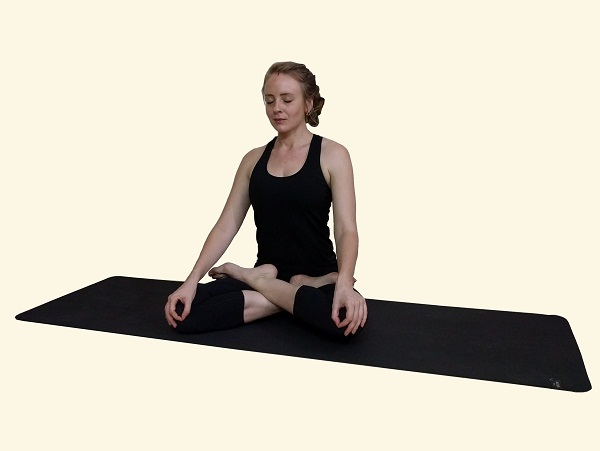Padma = Lotus
This is thought to be the best meditation posture, and if anyone is praticing Ashtanga yoga you will notice how the primary series is filled with lots of variations of padmasana and forward bends.

Steps
- Sit down on the floor in Dandasan. (legs staight out infront of you)
- Inhale, bend your right knee, then holding your right foot, place it onto the left thigh as far up as you can, while keeping the sole of your foot facing upwards. (you are aiming to bring the heel close to the pubic bone)
- Exhale, using the muscles bring the knee towards the floor.
- This is calle Ardha Padmasana (Half Lotus) practice up to this point, using the right hand to make circles with the right knee. Only proceed when you are not feeling strain in your knee.
- Once the right foot is in place, inhale and bend the left knee, and lift the foot up over the right leg and place if on the right thigh. The outer edge of the left foot should reach the crease of the hip.
- The spine should be straight
- Place the palms on the knees, either upward (considered to be energizing), or downward (considered to be grounding).
- Hold the posture for as long as it is comfortable
Benefits
- Relaxes the brain
- Provides simulation to the spine, pelvis, bladder and abdomen.
- Provides relief from menstrual discomfort.
- Helps in stretching muscles required for childbirth if this asana is practiced regularly during pregnancy.
- Provides some relief in sciatica.
- Increases spinal flxibility
- Relaxes the nervous system.
- Slows down breathing, thereby increasing concentration
Contraindications
- Knee or ankle injuries
- Padmasana is considered to be an intermediate to advanced pose. Do not perform this pose without sufficient prior experience or unless you have the supervision of an experienced teacher
Look for other postures in our asana directory